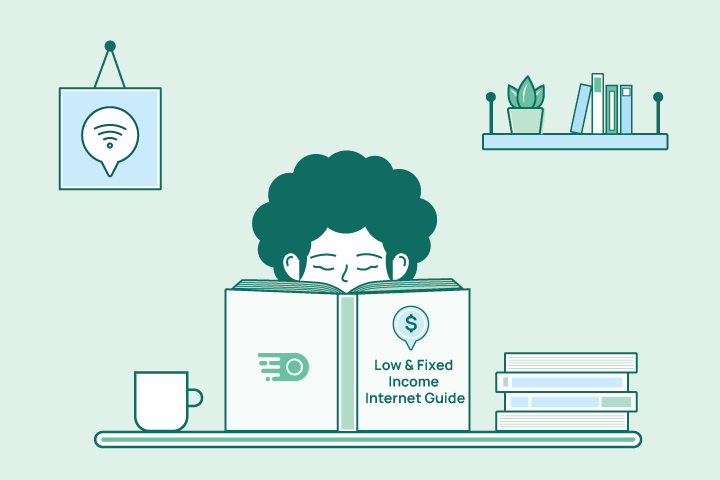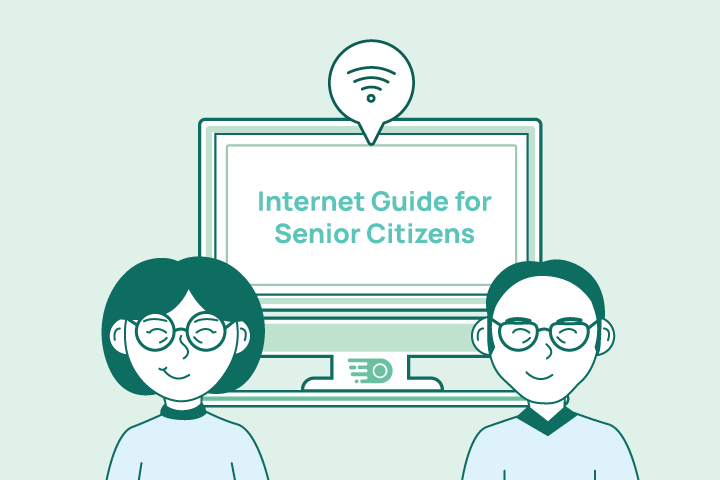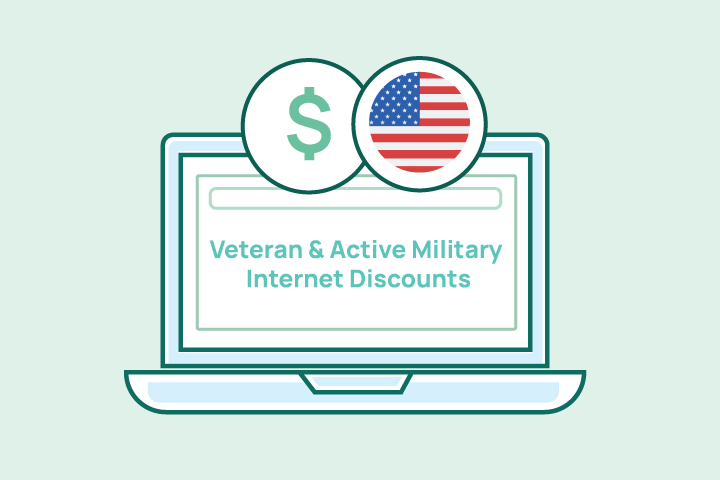Internet Guide for Low & Fixed Incomes 2026

HighSpeedOptions prides itself on providing honest, quality content. While we may be compensated when you make a purchase through links on our site, all opinions are our own. Here's how we make money.
Table of Contents
We’re all living in a digital age, and staying connected has never been more important. Whether it’s for work, school, or simply keeping in touch with loved ones, access to technology like phones, TVs, computers, and especially the internet, is a must.
The good news?
There are programs out there—run by the government, internet providers, and nonprofits—that are making it easier than ever for families and individuals to get affordable internet and bridge the digital divide. Here’s our guide to help you navigate the best internet options for lower and fixed-income households.
Key Takeaways: Affordable Internet for Low & Fixed Incomes
- Lifeline Program: Eligible low-income households can save $9.25 per month on internet or phone service through this federal program.
- Provider Discounts: Major ISPs like AT&T, Comcast, Cox, and Spectrum offer internet plans starting as low as $9.95/month for qualifying households.
- Compare Plans Easily: Use our provider comparison chart to find the best low-income internet options in your area.
- Nonprofit Support: Organizations like PCs for People, human-I-T, and EveryoneOn offer free or discounted computers, digital literacy training, and low-cost internet.
- Simple Eligibility: Most programs are available to households participating in government aid programs like SNAP, Medicaid, or NSLP.

Lifeline Support for Affordable Internet
Lifeline is a program from the FCC that makes communications services accessible and affordable for low-income consumers. Through Lifeline, you can apply for a monthly discount on internet or telephone services from participating providers.
How Does Lifeline Work
Eligible low-income households receive up to a $9.25 discount on either phone, internet, or bundled services. The Lifeline program is available in every state, commonwealth territory, and on Tribal lands.
Use the Lifeline search tool to see if there are participating internet service providers near you. It may not show every participating provider; you can always reach out to them directly to see if they offer Lifeline.
How to Apply for the Lifeline Program
Applying for the Lifeline program is simple and can be done online, by mail, or through a participating internet service provider or phone provider. Here’s how:
1. Check Eligibility
Make sure your household meets income requirements (at or below 135% of the Federal Poverty Guidelines) or participates in a qualifying assistance program such as:
- SNAP (Food Stamps)
- Medicaid
- SSI
- Federal Public Housing Assistance
- Veterans Pension and Survivors Benefit
- Tribal assistance programs (if you live on Tribal lands)
2. Gather Your Documents
You’ll need proof of eligibility, such as a benefits letter, program card, or income statement.
3. Apply Online or by Mail
- Online: Visit lifelinesupport.org and click “Apply Now.”
- Mail: Download and complete the paper application, then mail it to the Lifeline Support Center.
4. Get Approved
If approved, you’ll receive an eligibility confirmation that you can present to a participating provider.
5. Choose a Provider
Contact an internet provider or phone provider in your area that participates in Lifeline. Share your approval info to start receiving the monthly discount.
Low-Income Assistance Programs from Internet Service Providers

Several internet service providers have assistance programs to offer discounted internet for low-income households.
AT&T Access
Access from AT&T provides low-cost internet service to households in AT&T internet service areas who participate in SNAP, SSI, NSLP, or similar programs. Find out if Access from AT&T is available near you and apply.
- Cost Per Month: $30.00
- Internet Speed: Up to 100 Mbps
Internet Essentials From Xfinity (Comcast)
Designed for qualifying low-income households, this Xfinity internet plan includes internet and in-home WiFi for $14.95/month. Customers may also purchase a discounted laptop or desktop.
- Cost Per Month: $14.95
- Internet Speed: Up to 75 Mbps
Cox Connect2Compete
Cox is helping families stay connected online with affordable, low-income internet. Eligible families can get discounted, reliable home internet with WiFi through Cox Connect2Compete. Find out if you’re qualified and start your application.
- Cost Per Month: $9.95
- Internet Speed: Up to 100 Mbps
Frontier Lifeline Program
Frontier partners with the Lifeline program for a few of its internet and phone services. Even if you don’t have Frontier voice service, you may still qualify for a Lifeline discount on standalone internet. The discount amount varies by state. Check Frontier’s website to see if you are eligible and search for service.
Enter your zip code to see providers near you
Mediacom Xtream Connect
Available to families with K–12 students in qualifying programs and no outstanding Mediacom balance. Offers up to 100 Mbps service for under $15/month.
- Cost Per Month: $14.99
- Internet Speed: Up to 100 Mbps
RCN Internet First
RCN offers the RCN Internet First program, which is designed to help families and students in low-income households have reliable access to the internet. Check out Internet First and see if you are eligible.
- Cost Per Month: $19.95
- Internet Speed: Up to 150 Mbps
Spectrum Internet Assist
The Spectrum Internet Assist program provides discounted high-speed Spectrum internet to low-income households with the option to add in-home WiFi. Eligible households will also receive Spectrum’s Security Suite and an internet modem at no additional cost.
- Cost Per Month: $25.00
- In-home WiFi Per Month: $10.00
- Internet Speed: Up to 50 Mbps
Windstream Lifeline Program
Windstream also accepts the federal Lifeline discount to help qualified individuals lower their monthly cost of phone or internet service. The monthly Lifeline discount can be applied to your internet or phone plan, not both.
If you don’t qualify for the programs listed above or don’t live in these providers’ service areas, you can still find low-cost internet options. Internet service providers vary by zip code. Our local internet search tool makes it easy to see what internet options are available in your area.
Compare Internet Provider Low-Income Plans and Pricing
| Provider | Monthly Cost | Speed | Key Eligibility |
| AT&T Access | $30.00 | Up to 100 Mbps | SNAP, SSI, NSLP |
| Comcast Internet Essentials | $14.95 | Up to 75 Mbps | SNAP, SSI, Medicaid |
| Cox Connect2Compete | $9.95 | Up to 100 Mbps | K–12 student + aid program |
| Frontier Internet | Varies | Varies | Lifeline-qualified |
| Mediacom Xtream Connect | $14.99 | Up to 100 Mbps | K–12 student + no outstanding balance |
| RCN Internet First | $19.95 | Up to 150 Mbps | Low-income, student households |
| Spectrum Assist | $25.00 (+$10 WiFi) | Up to 50 Mbps | Aid programs |
| Windstream Lifeline | Varies | Varies | Lifeline-qualified |
| Provider | AT&T Access |
| Monthly Cost | $30.00 |
| Speed | Up to 100 Mbps |
| Key Eligibility | SNAP, SSI, NSLP |
| Provider | Comcast Internet Essentials |
| Monthly Cost | $14.95 |
| Speed | Up to 75 Mbps |
| Key Eligibility | SNAP, SSI, Medicaid |
| Provider | Cox Connect2Compete |
| Monthly Cost | $9.95 |
| Speed | Up to 100 Mbps |
| Key Eligibility | Kâ12 student + aid program |
| Provider | Frontier Internet |
| Monthly Cost | Varies |
| Speed | Varies |
| Key Eligibility | Lifeline-qualified |
| Provider | Mediacom Xtream Connect |
| Monthly Cost | $14.99 |
| Speed | Up to 100 Mbps |
| Key Eligibility | Kâ12 student + no outstanding balance |
| Provider | RCN Internet First |
| Monthly Cost | $19.95 |
| Speed | Up to 150 Mbps |
| Key Eligibility | Low-income, student households |
| Provider | Spectrum Assist |
| Monthly Cost | $25.00 (+$10 WiFi) |
| Speed | Up to 50 Mbps |
| Key Eligibility | Aid programs |
| Provider | Windstream Lifeline |
| Monthly Cost | Varies |
| Speed | Varies |
| Key Eligibility | Lifeline-qualified |
Nonprofit Organizations for Internet Access & Tech

If you need additional resources, like technology and digital training, several nonprofits offer discounted or free refurbished computers, training, and tools to find low-cost internet for low-income families. Check out these organizations and how they can help you.
- Computers with Causes
Provides refurbished computers to students, educational programs, and individuals in need. Requires an application form. - EveryoneOn
Connects low-income families to affordable internet service and computers. Includes an offer locator tool. - human-I-T
Offers low-cost internet, refurbished technology, and digital training to low-income individuals and nonprofits. - PCs for People
Supplies affordable computers and internet access to qualified individuals and nonprofits. Must meet income or assistance program eligibility. - The On It Foundation
Provides free computers, internet access, and computer training to low-income families with K–12 students that qualify. - U.S. Armed Forces Veterans
Veterans and seniors can access special discounts via the Veteran & Active Military Internet Discounts Guide and Internet Discounts Guide for Senior Citizens.
Final Thoughts: Low-Cost Internet is Within Reach
Reliable internet is essential for work, learning, and daily life, but it shouldn’t be a financial burden. With options like Lifeline, discounted internet provider programs, and nonprofit support, affordable internet is within reach. Explore the resources in this guide, compare plans, and take the first step toward getting connected at a price you can afford while providing modern conveniences and opportunities.
Internet for Low & Fixed Incomes FAQs
The digital divide refers to the gap between those who have reliable access to technology and the internet and those who do not. For low and fixed-income households, this divide can limit access to essential services like education, job opportunities, healthcare, and social connection, making it harder to keep up in an increasingly digital world. Affordable internet programs aim to help bridge this gap.
Lifeline is a federal program that offers a monthly discount of up to $9.25 on phone or internet service for qualifying low-income households. You can apply online through the National Verifier or through a participating internet provider.
Most programs require participation in government assistance programs like SNAP, Medicaid, SSI, NSLP, or housing assistance. Income-based eligibility typically follows federal poverty guidelines (e.g., 135% or 200% of the Federal Poverty Line).
Discounted internet plans for low-income households typically range from $9.95 to $30 per month, depending on the provider, speed, and available promotions.
Yes. Nonprofits like PCs for People, EveryoneOn, and human-I-T offer refurbished computers, discounted internet, and digital literacy resources to qualifying households.
Possibly. Organizations like Computers with Causes and The On It Foundation offer free or low-cost computers to students, veterans, and families in need. Each nonprofit has its own eligibility and application process.
Many providers offer discount programs beyond those listed here. Use our ZIP code internet search tool or the Lifeline provider search tool to see what’s available in your area.
For everyday tasks like email, web browsing, and video calls, internet speed between 25–50 Mbps is usually sufficient. Most low-income plans fall within this range.
Yes. While some programs are geared toward families with school-age children, others—like Lifeline and PCs for People—are open to individuals regardless of household makeup.
Yes. Seniors often qualify for programs through income or participation in benefits like Medicaid or SSI. Some ISPs and nonprofits also offer senior citizen internet discounts and resources.
Find providers in your area

Table of Contents




